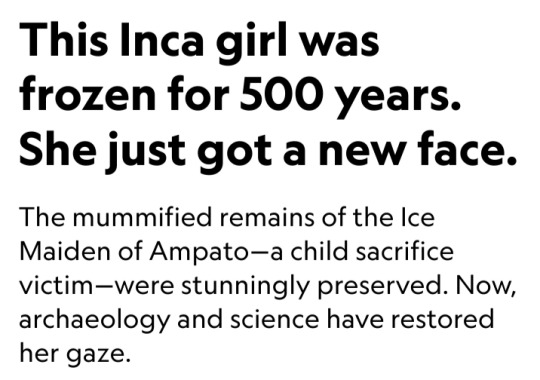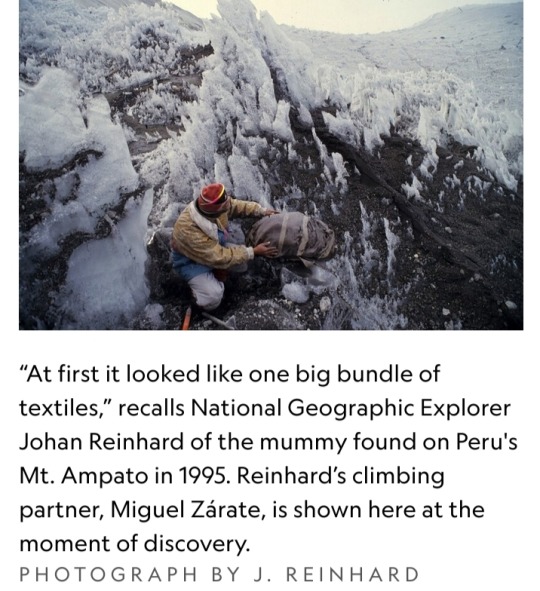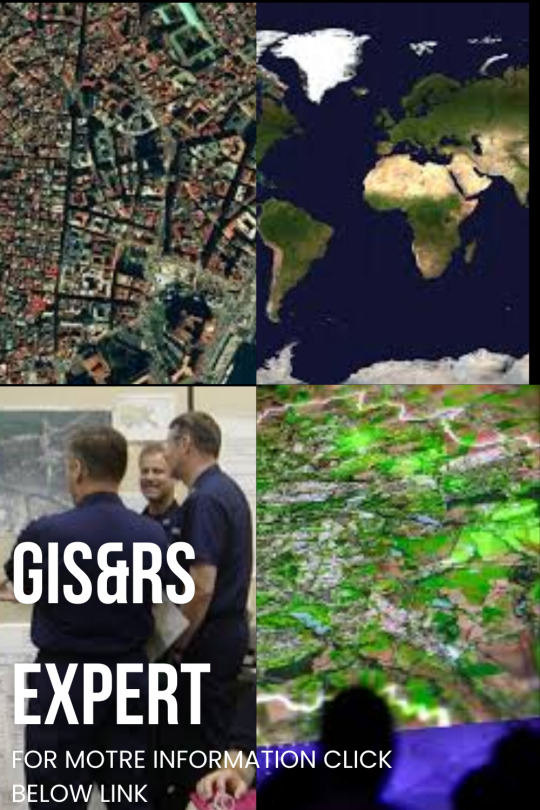#Geographic analysis
Explore tagged Tumblr posts
Text
What Is Market Research: Methods, Types & Examples
Learn about the fundamentals of market research, including various methods, types, and real-life examples. Discover how market research can benefit your business and gain insights into consumer behavior, trends, and preferences.
#Market research#Methods#Types#Examples#Data collection#Surveys#Interviews#Focus groups#Observation#Experimentation#Quantitative research#Qualitative research#Primary research#Secondary research#Online research#Offline research#Demographic analysis#Psychographic analysis#Geographic analysis#Market segmentation#Target market#Consumer behavior#Trends analysis#Competitor analysis#SWOT analysis#PESTLE analysis#Customer satisfaction#Brand perception#Product testing#Concept testing
0 notes
Text
guns, germs, and steel by Jared Diamond was taught like a bible in my high school. I think i’m gonna reread some of it and I think I’m not gonna like it very much.
#I’ve read most of it before but it was years ago#and from what I remember there wasn’t a lot of tangible blame placed on colonists actions and violence for the resulting inequality#the geographical analysis was intesteresting but condemning agriculture????????????#im reading some scholarly criticisms of it rn but I need to refresh my memory of the book itself before this all really makes sense#I just feel like this is a good place to break down some of my own biases bc#I was educated at a time when this book was literally worshipped by the white academic liberal community - aka my teachers and my family#oof#double shot
15 notes
·
View notes
Text
still thinking about that video documentary about the geography of the manson murders
4 notes
·
View notes
Text


By Erin Blakemore
October 25, 2023
More than 500 years ago, a 14-year-old girl was escorted up an Andean peak and sacrificed to Inca gods.
Buried on the mountain with a variety of offerings, the young woman’s body naturally mummified over time, preserving her hair, her fingernails, the colorful robes she wore on her last day.
But at some point across the centuries, her face became exposed to the elements, her features slowly vanishing over seasons of sunlight and snowfall.
Now, that long-lost face has been recovered thanks to painstaking archaeological analysis and forensic reconstruction.
A striking 3-D bust of the young woman, known today as the Ice Maiden of Ampato, is the centerpiece of a new exhibit in Peru and part of an ongoing effort to understand the drama of human sacrifice practiced in the Andes half a millennium ago.

A sacrificial offering
When National Geographic Explorer Johan Reinhard encountered the mummy, also known as Juanita, atop 21,000-foot Mount Ampato during a 1995 expedition, he knew he had discovered something spectacular.
“At first it looked like one big bundle of textiles,” Reinhard recalls. Then he saw the wizened face amid the folds of fabric.
Here was a young victim of the elusive Inca ritual known as capacocha.
Capacocha mostly involved the sacrifice of children and animals who were offered to the gods in response to natural disasters — to consolidate state power in far-flung provinces of the Inca Empire, or simply to please the deities.
The ritual played an important part in sustaining the Inca Empire. It would involve feasts and grand processions to accompany the children, who appear to have been chosen for their beauty and physical perfection.
Being selected for sacrifice, researchers believe, would have considered a deep honor by the child’s family and community.

Most of the information we have on capacocha, however, is second hand, notes Dagmara Socha, an archaeologist with the Center for Andean Studies at the University of Warsaw who studies the ritual and commissioned the facial reconstruction of the Ice Maiden of Ampato.
“No European colonist ever saw the ceremony,” she explains.
Despite gaps in the historical record, the high-altitude archaeological finds of more than a dozen Inca children on Ampato and other mountains point provide critical evidence for what happened during these rituals.
The means of sacrifice varied, perhaps due to customs related to specific gods. Some children were buried alive or strangled; others had their hearts removed.
The Ice Maiden’s life ended with a single blunt-force blow to the back of the skull.
In search of the Ice Maiden
Oscar Nilsson knows that skull intimately: He spent months with a replica of it in his Stockholm studio, eventually fashioning a sculpture of the 14-old-girl that, glimpsed from afar, almost seems alive.

It’s a two-step process, says the Swedish archaeologist and sculptor.
First, Nilsson immerses himself in the world of his subject with an archaeologist’s eye for detail, digesting as much data as possible to understand what she might have looked like.
Even without a mummified face, he can extrapolate the likely depth of the facial tissue that once draped over those bones, using everything from CT scans to DNA analyses to information about diet and disease to make educated guesses about the individual’s face.
Then came the handiwork. Nilsson printed a 3-D replica of the Ice Maiden’s skull, plugging wooden pegs into its surface to guide the depth and placement of each hand-crafted, plasticine clay muscle.
Eerie eyes, masseter muscles, a nose, the delicate rope-like tissues that constitute a human face: each was added in turn.
After making a silicone mold of the bust, he added hundreds of individual hairs and pores in shades of brown and pink.
It took ten weeks.
Following the Inca Gods
The result, wrapped in robes woven by local women from Peru's Centro de Textiles Tradicionales, is the main attraction at “Capacocha: Following the Inca Gods” at the Museo Santuarios Andinos in Arequipa, Peru through November 18.
The reconstruction will be displayed alongside the Ice Maiden’s mummy, accompanied by the stories of 15 other children selected for capacocha atop Ampato and other Andean peaks.
Their ages range from 3 to about 13. The mummies and skeletal remains of several are featured as 3-D models at the exhibition, which also showcases holographs of some of the sacred items buried alongside them.
These natural mummies offer scientists tantalizing clues about their last days.
When Socha and colleagues conducted toxicological and forensic analyses of the remains of a toddler and four six-to-seven-year-old victims featured in the exhibition, they found they were well cared for in the months before their sacrifice.
They were fed a steady diet of coca leaves, ayahuasca vine, and alcohol in the weeks before their deaths — not as much to intoxicate them as to keep them sedated and anxiety-free as the timeline hurtled toward their sacrifice.
“We were really surprised by the toxicology results,” says Socha.
“It wasn’t only a brutal sacrifice. The Inca also wanted the children to be in a good mood. It was important to them that they go happily to the gods.”
High altitude, psychogenic substances, the spectacular view, the knowledge the afterlife was near — all must have made for an astonishing ceremony, says Reinhard.
“The whole phenomenon must have been overpowering.”
During the last phase of his reconstruction, Nilsson spent hours contemplating and attempting to capture the young girl’s presence 500 years after her death.
The result is both unsettlingly realistic and jarringly personal.
“She was an individual,” the forensic reconstructionist says.
“She must have understood her life would end on the mountaintop in a couple of weeks. We can only hope that she believed in the afterworld herself.”
For Reinhard, finally seeing the face of the girl he carried down the mountain on his back decades ago brought the Ice Maiden’s story full circle.
“It brings her back to life,” he says. The reconstruction brings the focus as much to her culture and daily life as to her spectacular death.
But Nilsson never forgot the way the Ice Maiden died, even as he brought her to life through his reconstruction.
More than anything, he says, he wanted to capture a sense of being frozen — a nod not just to her icy, mummified future but to a girl teetering on the edge of eternity, though still very much alive.
“She knew she was supposed to smile, to express pride,” he says. “Proud to be chosen. But still very, very afraid.”
#Ice Maiden of Ampato#Inca Girl#archaeological analysis#forensic reconstruction#human sacrifice#Peru#3-D bust#Juanita#Johan Reinhard#Mount Ampato#National Geographic#National Geographic Explorer#expedition#1990s#20th century#capacocha#Inca ritual#Inca Empire#Dagmara Socha#facial reconstruction#archaeology#archaeologists#Oscar Nilsson#sculptor#Centro de Textiles Tradicionales#Capacocha: Following the Inca Gods#Museo Santuarios Andinos#natural mummies#culture#forensic reconstructionist
2 notes
·
View notes
Text
If you do want to know what the most recent career path change I’ve had is, simply analyze my most recent posts using the immortal science of historical materialism.
9 notes
·
View notes
Text




Odysseus is third world coded, this is the powerlessness of those who experience colonialism
#troy 2004#if in the subtext of analogy with modern times the writers added to the story mycenae is usa and troy is the middle east#then ithaca here is latin america#poor colonial territory in relative geographical proximity to the empire#rather overlooked#doomed to remain servile#i keep finding more layers of analysis in the film#its not so deep i know it#but it works
3 notes
·
View notes
Text
GIS‑based flood risk assessment using multi‑criteria decision analysis of Shebelle River Basin in southern Somalia
Article Highlights• GIS-based analysis identified flood hazard, vulnerabilityand risk zones in the Shebelle River Basin, Somalia.• Majority of the basin falls in very low to moderate riskranges, with small areas at high and very high risk.• Flood hazard, vulnerability and risk maps can guide flood protection efforts and raise awareness amonglocal populations Article Highlights• GIS-based…
#Competitive Exams#Geography of India#GIS‑based flood risk assessment using multi‑criteria decision analysis of Shebelle River Basin in southern Somalia#Remote Sensing and Digital Image Processing (DIP)#SET Geographical Techniques
0 notes
Link
#Population dynamics#Spatial analysis#Geographic information system#Zamboanga Sibugay province#Urbanization trends
1 note
·
View note
Text
I will do gis mapping, spatial analysis, remote sensing, geospatial,satellite analyst

0 notes
Text
Exploring Local Communities Through Carmel Zip Codes

Credit: Image by Republica | Pixabay
An Overview of Carmel Zip Codes and What They Offer
Imagine moving to a new city or planning a trip to an unfamiliar territory; without clear guidance, you may waste time searching for activities that match your interests. Well, the unsung heroes of geographical organization are zip codes! If you wish to explore the coastal area of the Monterey Peninsula and the beautiful Carmel-by-the-Sea, break it down into manageable parts to find what you're looking for with ease and precision. Here's an in-depth look at notable Carmel zip codes and what they offer.
What Are The Carmel Zip Codes?
Carmel Village itself and its surrounding areas are predominantly within the 93921 zip code. The more remote parts, such as Carmel Highlands and Carmel Valley, are zoned under 93923 and 93924 zip codes, depending on the specific area. These Carmel zip codes mark neighborhoods and districts and showcase unique lifestyles and attractions.
Why Use Carmel Zip Codes When Exploring?
Carmel’s zip codes help visitors and residents explore the area, understand its geography, and discover what each part offers.
Pinpoint Diverse Neighborhoods Carmel zip codes represent a unique aspect of living, from the bustling charm of downtown to the quiet luxury of cliffside communities or the sun-drenched appeal of inland areas.
Tailor Experiences to Preferences Carmel zip codes can guide you to areas with attractions that match your interests. Love the beach? Focus on 93921. Prefer vineyards and open spaces? Head to 93924.
Ease Real Estate Searches Homebuyers can use Carmel zip codes to target specific lifestyles, property types, and price ranges. These codes help streamline the search for their dream home, whether they seek a coastal cottage or a sprawling valley estate.
Discover Hidden Gems Carmel zip codes often include lesser-known spots that might not appear in general guides. For instance, 93922 offers serene hiking trails and stunning ocean views less heavily marketed than downtown Carmel's attractions.
Simplify Navigation Exploring the Carmel region using zip codes makes it easier to navigate, whether you're planning a trip or relocating.
Get To Know Carmel Zip Codes
93921: Carmel-by-the-Sea’s Storybook Charm
The 93921 Carmel zip code is inseparable from charming downtown and the surrounding neighborhoods. This area offers charming scenery of fairy-tale cottages, small-styled shops, and beautiful artistic galleries. Roads are easy to walk, and the neighborhood environment creates a village vibe, making it suitable for people who have retired, families, and working people.
Homes in this area range from small bungalows to multimillion-dollar estates. Dining options are abundant. Parking and home prices can be challenging, but the unique charm outweighs the drawbacks for many.
93923: Coastal Elegance of Carmel Highlands
93923 zip code covers Carmel Highlands, which is located to the south of Carmel-by-the-Sea. This area is affluent, with cliff homes and villas with breathtaking vistas of the Pacific Ocean from their balconies. Some rank among the most costly in the region and cater to luxury buyers.
Carmel Highlands appeals to those seeking tranquility and high-end living. The atmosphere is rural, the location is relatively secluded but it is only a few minutes’ drive from Carmel town proper. Places of interest include Point Lobos State Natural Reserve which offers trails as well as wildlife viewing opportunities.
93924: Carmel Valley’s Vineyards
Carmel Valley is famous for its sunny weather and wine-country vibes. Bernardus and Holman Ranch wineries are among the many that make this area a wine-lover destination. In addition to vineyards, golf courses, and equestrian properties define the area.
Homes in 93924 often have large lots, perfect for anyone seeking a quiet retreat. They are less expensive than coastal Carmel but require a longer commute to the beach and shopping centers.
93920: Big Sur’s Rugged Beauty
The 93920 zip code includes Big Sur, which is famed for its stunning topography along the edges of the ocean. Due to its aforesaid features, this region is perfect for those who are in search of solitude and stunning landscapes. Many houses rest at the cliff edges affording extraordinary views of the sea.
Big Sur is a haven for artists, nature enthusiasts, and those who crave privacy. However, living here means limited access to amenities. Residents often travel to Carmel or Monterey to shop and dine.
93940: Monterey’s Urban Convenience
93940 includes Monterey. Though not part of defined Carmel zip codes, it is definitely close. This area is ideal for those who want proximity to downtown Monterey, Cannery Row, and the Monterey Bay Aquarium.
Homes here range from historic Victorians to modern condos, catering to various budgets. The area boasts excellent schools, parks, and family-friendly activities. Monterey’s vibrant cultural scene and stunning bay views make it a desirable destination.
93950: Pacific Grove’s Coastal Retreat
The 93950 zip code covers Pacific Grove, located just north of Carmel. This charming seaside community features historic homes, coastal trails, and a laid-back lifestyle.
The Lovers Point Park and Asilomar State Beach are favorite spots for outdoor activities. Homes here are more affordable than those with Carmel zip codes, attracting families, retirees, and first-time buyers.
93953: Exclusive Pebble Beach Living
Pebble Beach is an internationally renowned community. This area is synonymous with prestige and is known for its luxury estates and world-class golf courses. Residents enjoy gated privacy, stunning ocean views, and access to the famous 17-mile Drive.
Pebble Beach is perfect for golf enthusiasts and affluent buyers looking for exclusivity. The area’s top-tier schools and peaceful surroundings also attract families. With high property values and HOA fees, living here requires a significant financial commitment. However, for those who can afford it, Pebble Beach offers unparalleled luxury.
93955: Affordable and Accessible Seaside
Seaside is just north of Monterey. This area is one of the more affordable options near Carmel zip code addresses. It is a practical and budget-friendly option for coastal living.
It has a mix of older homes, newer developments, and some apartments. It is close to California State University Monterey Bay and Fort Ord National Monument.
Wrap Up
Carmel’s zip codes offer distinct lifestyles, from rugged beauty to unparalleled luxury. Whether you prioritize affordability, exclusivity, or proximity to nature, the Monterey Peninsula has something for everyone. Understanding what each zip code offers can help you find the perfect fit for your needs.
Visit https://heinrichbrooksher.com/zip-code-map/ to explore the unique neighborhoods defined by Carmel zip codes and find your perfect coastal home today.
Explore the stunning coastal neighborhoods, lifestyles, and attractions with our complete Carmel zip code guide!
#Community Information#Real Estate Blogs#Real Estate#Carmel CA Real Estate#Carmel CA Realtor#Carmel CA Homes#Carmel CA Neighborhoods#Carmel CA Communities#Carmel-by-the-Sea ZIP Code Map#Carmel CA Postal Codes#Monterey County ZIP Code Map#Carmel 93923 Boundary Map#93921 Carmel Downtown Map#California ZIP Code Locator#Carmel Neighborhood Maps#Carmel CA Real Estate Map by ZIP Code#Zip Code Boundaries#Mapping Carmel CA#Carmel CA Demographics#Geographic Information System#County Map#Municipalities#Census Data#Urban Planning#Demographics#Cartography#Spatial Analysis#Geographic Data Visualization#Boundary Mapping
0 notes
Text

Enhancing Gas Pipeline Management with GIS: Key Benefits and Applications
In the energy and utilities sector, gas pipeline management is complex, requiring precision, safety, and a clear strategy for both existing infrastructure and future expansion. Geographic Information Systems (GIS) have revolutionized pipeline management by providing a spatially accurate, data-rich view of assets. From asset management and leak detection to route planning and demand forecasting, GIS is becoming indispensable for gas companies. This blog delves into the ways GIS transforms gas pipeline management, delivering benefits across safety, efficiency, cost-saving, and planning.
#benefits of using gis for gas pipelines#ensuring gas pipeline safety with gis tools#gas network analysis#gas pipeline asset management#gas pipeline gis mapping services#gas pipeline leak detection using gis#gas pipeline management in gis#gas pipeline mapping software#gas pipeline monitoring tools#gas pipeline risk assessment#gis applications in energy sector#gis for gas pipeline monitoring#gis for infrastructure management#gis in oil and gas industry#gis pipeline maintenance software#gis pipeline monitoring system#gis pipeline route planning#gis software for gas pipeline route optimization#victoryofgoodoverevil#gis solutions for pipeline maintenance and monitoring#gis-based pipeline integrity management#pipeline data management#pipeline geographic information systems#pipeline management solutions#remote sensing for gas pipelines#spatial analysis for gas pipelines#spatial data for gas pipelines
0 notes
Text
🌍 What is Geospatial Data? 🌍
Curious about how we map cities, forests, and even track environmental changes? Geospatial data is the answer! 📍 This unique data type links information to real-world locations, transforming decision-making across sectors like urban planning, public health, agriculture, and more.
Our latest blog covers:
The different types of geospatial data (vector, raster, LiDAR) and what they’re used for.
How data is collected using satellites, drones, GPS, and crowdsourced contributions.
Real-world applications that show why geospatial data is so impactful.
Whether you're new to GIS or looking to deepen your expertise, this guide is packed with insights on how spatial data is shaping the future. Check it out here!
0 notes
Text
Study evaluates impacts of summer heat in U.S. prison environments
New Post has been published on https://thedigitalinsider.com/study-evaluates-impacts-of-summer-heat-in-u-s-prison-environments/
Study evaluates impacts of summer heat in U.S. prison environments


When summer temperatures spike, so does our vulnerability to heat-related illness or even death. For the most part, people can take measures to reduce their heat exposure by opening a window, turning up the air conditioning, or simply getting a glass of water. But for people who are incarcerated, freedom to take such measures is often not an option. Prison populations therefore are especially vulnerable to heat exposure, due to their conditions of confinement.
A new study by MIT researchers examines summertime heat exposure in prisons across the United States and identifies characteristics within prison facilities that can further contribute to a population’s vulnerability to summer heat.
The study’s authors used high-spatial-resolution air temperature data to determine the daily average outdoor temperature for each of 1,614 prisons in the U.S., for every summer between the years 1990 and 2023. They found that the prisons that are exposed to the most extreme heat are located in the southwestern U.S., while prisons with the biggest changes in summertime heat, compared to the historical record, are in the Pacific Northwest, the Northeast, and parts of the Midwest.
Those findings are not entirely unique to prisons, as any non-prison facility or community in the same geographic locations would be exposed to similar outdoor air temperatures. But the team also looked at characteristics specific to prison facilities that could further exacerbate an incarcerated person’s vulnerability to heat exposure. They identified nine such facility-level characteristics, such as highly restricted movement, poor staffing, and inadequate mental health treatment. People living and working in prisons with any one of these characteristics may experience compounded risk to summertime heat.
The team also looked at the demographics of 1,260 prisons in their study and found that the prisons with higher heat exposure on average also had higher proportions of non-white and Hispanic populations. The study, appearing today in the journal GeoHealth, provides policymakers and community leaders with ways to estimate, and take steps to address, a prison population’s heat risk, which they anticipate could worsen with climate change.
“This isn’t a problem because of climate change. It’s becoming a worse problem because of climate change,” says study lead author Ufuoma Ovienmhada SM ’20, PhD ’24, a graduate of the MIT Media Lab, who recently completed her doctorate in MIT’s Department of Aeronautics and Astronautics (AeroAstro). “A lot of these prisons were not built to be comfortable or humane in the first place. Climate change is just aggravating the fact that prisons are not designed to enable incarcerated populations to moderate their own exposure to environmental risk factors such as extreme heat.”
The study’s co-authors include Danielle Wood, MIT associate professor of media arts and sciences, and of AeroAstro; and Brent Minchew, MIT associate professor of geophysics in the Department of Earth, Atmospheric and Planetary Sciences; along with Ahmed Diongue ’24, Mia Hines-Shanks of Grinnell College, and Michael Krisch of Columbia University.
Environmental intersections
The new study is an extension of work carried out at the Media Lab, where Wood leads the Space Enabled research group. The group aims to advance social and environmental justice issues through the use of satellite data and other space-enabled technologies.
The group’s motivation to look at heat exposure in prisons came in 2020 when, as co-president of MIT’s Black Graduate Student Union, Ovienmhada took part in community organizing efforts following the murder of George Floyd by Minneapolis police.
“We started to do more organizing on campus around policing and reimagining public safety. Through that lens I learned more about police and prisons as interconnected systems, and came across this intersection between prisons and environmental hazards,” says Ovienmhada, who is leading an effort to map the various environmental hazards that prisons, jails, and detention centers face. “In terms of environmental hazards, extreme heat causes some of the most acute impacts for incarcerated people.”
She, Wood, and their colleagues set out to use Earth observation data to characterize U.S. prison populations’ vulnerability, or their risk of experiencing negative impacts, from heat.
The team first looked through a database maintained by the U.S. Department of Homeland Security that lists the location and boundaries of carceral facilities in the U.S. From the database’s more than 6,000 prisons, jails, and detention centers, the researchers highlighted 1,614 prison-specific facilities, which together incarcerate nearly 1.4 million people, and employ about 337,000 staff.
They then looked to Daymet, a detailed weather and climate database that tracks daily temperatures across the United States, at a 1-kilometer resolution. For each of the 1,614 prison locations, they mapped the daily outdoor temperature, for every summer between the years 1990 to 2023, noting that the majority of current state and federal correctional facilities in the U.S. were built by 1990.
The team also obtained U.S. Census data on each facility’s demographic and facility-level characteristics, such as prison labor activities and conditions of confinement. One limitation of the study that the researchers acknowledge is a lack of information regarding a prison’s climate control.
“There’s no comprehensive public resource where you can look up whether a facility has air conditioning,” Ovienmhada notes. “Even in facilities with air conditioning, incarcerated people may not have regular access to those cooling systems, so our measurements of outdoor air temperature may not be far off from reality.”
Heat factors
From their analysis, the researchers found that more than 98 percent of all prisons in the U.S. experienced at least 10 days in the summer that were hotter than every previous summer, on average, for a given location. Their analysis also revealed the most heat-exposed prisons, and the prisons that experienced the highest temperatures on average, were mostly in the Southwestern U.S. The researchers note that with the exception of New Mexico, the Southwest is a region where there are no universal air conditioning regulations in state-operated prisons.
“States run their own prison systems, and there is no uniformity of data collection or policy regarding air conditioning,” says Wood, who notes that there is some information on cooling systems in some states and individual prison facilities, but the data is sparse overall, and too inconsistent to include in the group’s nationwide study.
While the researchers could not incorporate air conditioning data, they did consider other facility-level factors that could worsen the effects that outdoor heat triggers. They looked through the scientific literature on heat, health impacts, and prison conditions, and focused on 17 measurable facility-level variables that contribute to heat-related health problems. These include factors such as overcrowding and understaffing.
“We know that whenever you’re in a room that has a lot of people, it’s going to feel hotter, even if there’s air conditioning in that environment,” Ovienmhada says. “Also, staffing is a huge factor. Facilities that don’t have air conditioning but still try to do heat risk-mitigation procedures might rely on staff to distribute ice or water every few hours. If that facility is understaffed or has neglectful staff, that may increase people’s susceptibility to hot days.”
The study found that prisons with any of nine of the 17 variables showed statistically significant greater heat exposures than the prisons without those variables. Additionally, if a prison exhibits any one of the nine variables, this could worsen people’s heat risk through the combination of elevated heat exposure and vulnerability. The variables, they say, could help state regulators and activists identify prisons to prioritize for heat interventions.
“The prison population is aging, and even if you’re not in a ‘hot state,’ every state has responsibility to respond,” Wood emphasizes. “For instance, areas in the Northwest, where you might expect to be temperate overall, have experienced a number of days in recent years of increasing heat risk. A few days out of the year can still be dangerous, particularly for a population with reduced agency to regulate their own exposure to heat.”
This work was supported, in part, by NASA, the MIT Media Lab, and MIT’s Institute for Data, Systems and Society’s Research Initiative on Combatting Systemic Racism.
#000#2023#aeronautics#aging#air#Analysis#Arts#author#change#climate#climate change#college#Community#comprehensive#cooling#data#data collection#Database#earth#effects#Environment#Environmental#Exhibits#Experienced#extension#Facilities#factor#federal#geographic#geophysics
0 notes
Text

#Geographic Information System (GIS) Software Market#Geographic Information System (GIS) Software Size#Geographic Information System (GIS) Software Growth#Geographic Information System (GIS) Software Trend#Geographic Information System (GIS) Software segment#Geographic Information System (GIS) Software Opportunity#Geographic Information System (GIS) Software Analysis 2024#Geographic Information System (GIS) Software Forecast
0 notes
Text
Geographic Information System (GIS) Tools Market Size, Share, Types, Products, Trends, Growth, Applications and Forecast 2024 to 2032
Global Geographic Information System (GIS) Tools Market size is expected to grow from USD 9.3 Billion in 2023 to USD 20.38 Billion by 2032, at a CAGR of 9.11% during the forecast period (2024-2032).
Tools for Geographic Information Systems (GIS) The industry is now offering a thorough study of numerous elements that are likely to contribute to economic growth as well as those that may be crucial in the expansion of the market throughout the forecast period. The Geographic Information System (GIS) Tools record Industry offers a comprehensive analysis based on pricing, production, and market revenue. The research also considers the specifics of earnings and sales related to the market and gives an outline of the segmentation based on geography.
The Geographic Information System (GIS) Tools Market has undergone a thorough investigation to identify the various uses for the product's attributes. The study includes an explanation of the various aspects of the industry that comprise data and market growth in relation to production, technical improvements, and income generated by the organization. In addition, the accounts have examined market risk elements such as inventions, market environment, economic constraints, and market problems.
Get Full PDF Sample Copy of Report: (Including Full TOC, List of Tables & Figures, Chart) @
https://introspectivemarketresearch.com/request/5515
Updated Version 2024 is available our Sample Report May Includes the:
Scope For 2024
Brief Introduction to the research report.
Table of Contents (Scope covered as a part of the study)
Top players in the market
Research framework (structure of the report)
Research methodology adopted by Worldwide Market Reports
Leading players involved in the Geographic Information System (GIS) Tools Market include:
Environmental Systems Research Institute, Inc. (ESRI) (US), Pitney Bowes Inc. (US), Autodesk, Inc. (US), Trimble Inc. (US), Bentley Systems, Incorporated (US), General Electric Co. (US), Blue Marble Geographics (US), Maxar Technologies Inc. (US), Topcon Positioning Systems (US), Caliper Corporation (US), Asset Essentials (US)
Moreover, the report includes significant chapters such as Patent Analysis, Regulatory Framework, Technology Roadmap, BCG Matrix, Heat Map Analysis, Price Trend Analysis, and Investment Analysis which help to understand the market direction and movement in the current and upcoming years.
If You Have Any Query Geographic Information System (GIS) Tools Market Report, Visit:
https://introspectivemarketresearch.com/inquiry/5515
Segmentation of Geographic Information System (GIS) Tools Market:
By Component
Hardware
Software
By Function
Mapping
Surveying
Telematics and Navigation
Location-based Services
By End-User
Agriculture
Transportation
Government
Healthcare
Mining
Others
Market Segment by Regions: -
North America (US, Canada, Mexico)
Eastern Europe (Bulgaria, The Czech Republic, Hungary, Poland, Romania, Rest of Eastern Europe)
Western Europe (Germany, UK, France, Netherlands, Italy, Russia, Spain, Rest of Western Europe)
Asia Pacific (China, India, Japan, South Korea, Malaysia, Thailand, Vietnam, The Philippines, Australia, New Zealand, Rest of APAC)
Middle East & Africa (Turkey, Bahrain, Kuwait, Saudi Arabia, Qatar, UAE, Israel, South Africa)
South America (Brazil, Argentina, Rest of SA)
Key Benefits of Geographic Information System (GIS) Tools Market Research:
Research Report covers the Industry drivers, restraints, opportunities and challenges
Competitive landscape & strategies of leading key players
Potential & niche segments and regional analysis exhibiting promising growth covered in the study
Recent industry trends and market developments
Research provides historical, current, and projected market size & share, in terms of value
Market intelligence to enable effective decision making
Growth opportunities and trend analysis
Covid-19 Impact analysis and analysis to Geographic Information System (GIS) Tools market
If you require any specific information that is not covered currently within the scope of the report, we will provide the same as a part of the customization.
Acquire This Reports: -
https://introspectivemarketresearch.com/checkout/?user=1&_sid=5515
About us:
Introspective Market Research (introspectivemarketresearch.com) is a visionary research consulting firm dedicated to assist our clients grow and have a successful impact on the market. Our team at IMR is ready to assist our clients flourish their business by offering strategies to gain success and monopoly in their respective fields. We are a global market research company, specialized in using big data and advanced analytics to show the bigger picture of the market trends. We help our clients to think differently and build better tomorrow for all of us. We are a technology-driven research company, we analyze extremely large sets of data to discover deeper insights and provide conclusive consulting. We not only provide intelligence solutions, but we help our clients in how they can achieve their goals.
Contact us:
Introspective Market Research
3001 S King Drive,
Chicago, Illinois
60616 USA
Ph no: +1 773 382 1049
Email: [email protected]
#Geographic Information System (GIS) Tools#Geographic Information System (GIS) Tools Market#Geographic Information System (GIS) Tools Market Size#Geographic Information System (GIS) Tools Market Share#Geographic Information System (GIS) Tools Market Growth#Geographic Information System (GIS) Tools Market Trend#Geographic Information System (GIS) Tools Market segment#Geographic Information System (GIS) Tools Market Opportunity#Geographic Information System (GIS) Tools Market Analysis 2024
1 note
·
View note
Text
#advertising space#advertising strategy#Bing ads#business promotion#career guide#career in finance#conversion rates#cost per click#CPC#Customer conversion#daily budget#digital age#digital marketing#effective search ads#finance industry#geographic targeting#Google ads#Google analytics#Job search#jobsbuster#JobsBuster article#keyword analysis#Keyword Research#keyword terms#language targeting#marketing dollars#marketing strategies#online advertising#online marketing#online presence
0 notes